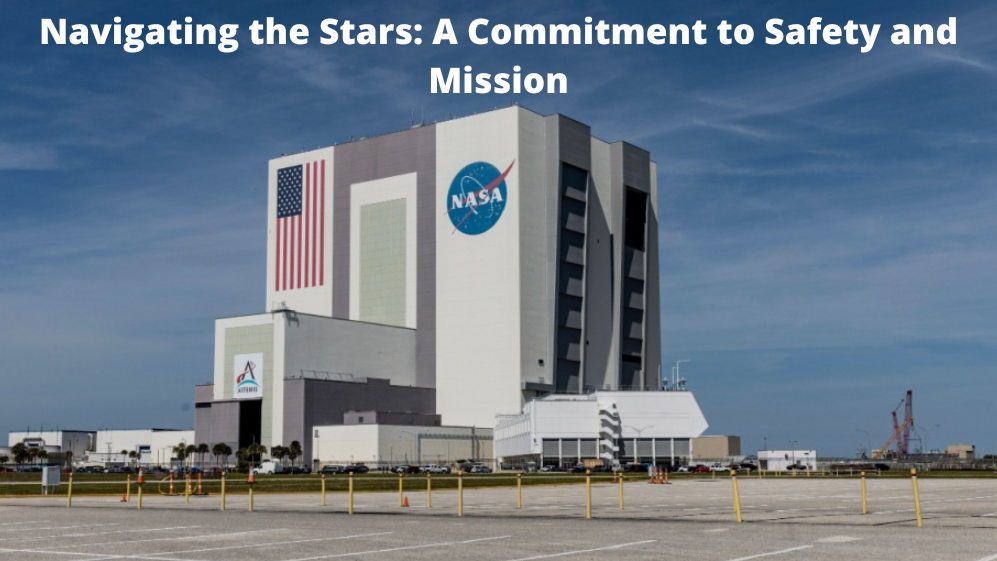Navigating the Stars: A Commitment to Safety and Mission

Fallston Group is a global reputational agency that often deals with the intricate balance between managing risk and maintaining trust. Recently, NASA has faced one of the most challenging decisions in its storied history: the decision to return two astronauts, Suni Williams and Butch Wilmore, from the International Space Station (ISS) using a SpaceX capsule instead of the Starliner spacecraft. This decision has sparked much discussion, and I’d like to share some thoughts on why this was not only the right call but also a testament to NASA’s evolved culture of safety, communication, and mission-driven focus. Safety: The Bedrock of Every Decision At NASA, safety isn’t just a priority—it’s the foundation upon which every decision is made. The space agency has a long history of pushing the boundaries of human exploration, but it does so with a clear and unwavering commitment to the safety of its astronauts. In the case of Suni and Butch, ensuring their safe return to Earth is non-negotiable. The decision to use a SpaceX capsule underscores this commitment, highlighting that no risk is worth taking if it could jeopardize lives. The Inherent Risks of Space Exploration Space exploration is, by its very nature, fraught with risks. Every astronaut who embarks on a mission understands and accepts these dangers. They do so because they believe deeply in NASA’s mission: to advance knowledge and make life on Earth better. Suni and Butch, like all astronauts, are driven by a sense of purpose that transcends the personal risks they face. Even in challenging circumstances, their continued presence on the ISS means more scientific work can be accomplished—work that benefits all of humanity. Learning from the Past: The Challenger and Columbia Lessons NASA’s history has not been without tragedy. The Challenger and Columbia disasters serve as stark reminders of the dangers of space exploration. What’s particularly important to remember about these incidents is that, in both cases, post-flight analysis revealed that the hardware was signaling issues long before the disasters occurred. The hardware was, in essence, “talking to us,” but the process of reviewing and acting on this data was flawed. These events taught us a crucial lesson: fostering a culture that encourages open communication and values dissenting opinions. At NASA, this lesson has been taken to heart. Today, every piece of data is scrutinized, and every voice is heard. As a leader, I’ve always believed in the importance of inviting and valuing dissenting opinions. It’s a practice that can make the difference between success and catastrophe. A Culture of Communication and Thoroughness In the current Starliner situation, NASA has demonstrated how far it has come. The agency has meticulously analyzed all available data and sought out every opinion, ensuring no stone is left unturned. This approach reflects a culture of thorough communication and an environment where every team member’s voice is valued. This culture allows NASA to make decisions based on a comprehensive understanding of the situation rather than assumptions or incomplete information. The Technical Realities and Redundancy The technical aspects of this situation are complex. The Starliner spacecraft has multiple thrusters, and while only one remains non-operational, the initial failure of five thrusters raised significant concerns. Although four thrusters were recovered in time for docking, the remaining engines’ reliability is still under scrutiny. Ground testing has provided some answers, but not enough to ensure absolute confidence in the spacecraft’s performance. In situations like this, it’s crucial to err on the side of caution. The spacecraft’s thrusters won’t return to Earth for post-flight inspection, meaning NASA can’t confirm their condition after the fact. Given this uncertainty, the decision to return the astronauts via SpaceX—a decision supported by thorough testing and analysis—was the right one. The Right Decision for the Right Reasons Starliner will return to Earth in a few days. Even if this uncrewed mission is successful, it does not negate the wisdom of the decision to prioritize astronaut safety by opting for an alternative return method. This situation is a powerful example of how NASA has evolved into an organization that embodies thoroughness, clear communication, and a culture of safety and voice for all. As someone who has spent his career helping organizations manage crises and protect their reputations, I can confidently say that NASA’s approach is a responsible leadership model. In the face of uncertainty, they made a tough but correct decision, placing the safety of their people above all else. It’s a decision that will protect lives and maintain the trust that the world places in NASA’s mission. At Fallston Group, we understand that in moments of crisis, the choices we make define us. NASA’s choice to prioritize safety and transparency is a reminder that in any field—whether exploring the stars or managing a company’s reputation—the well-being of people and the integrity of the mission must always come first.
